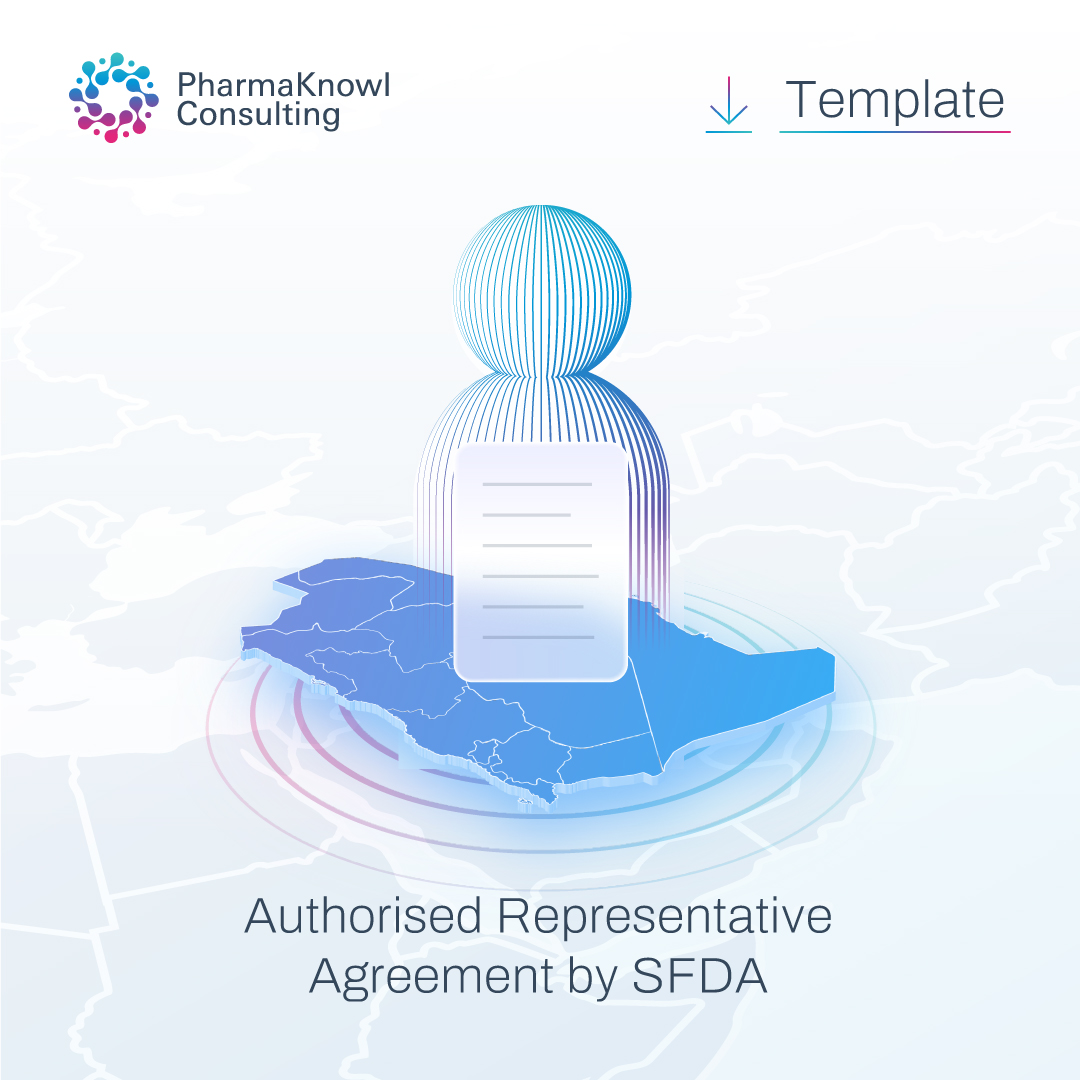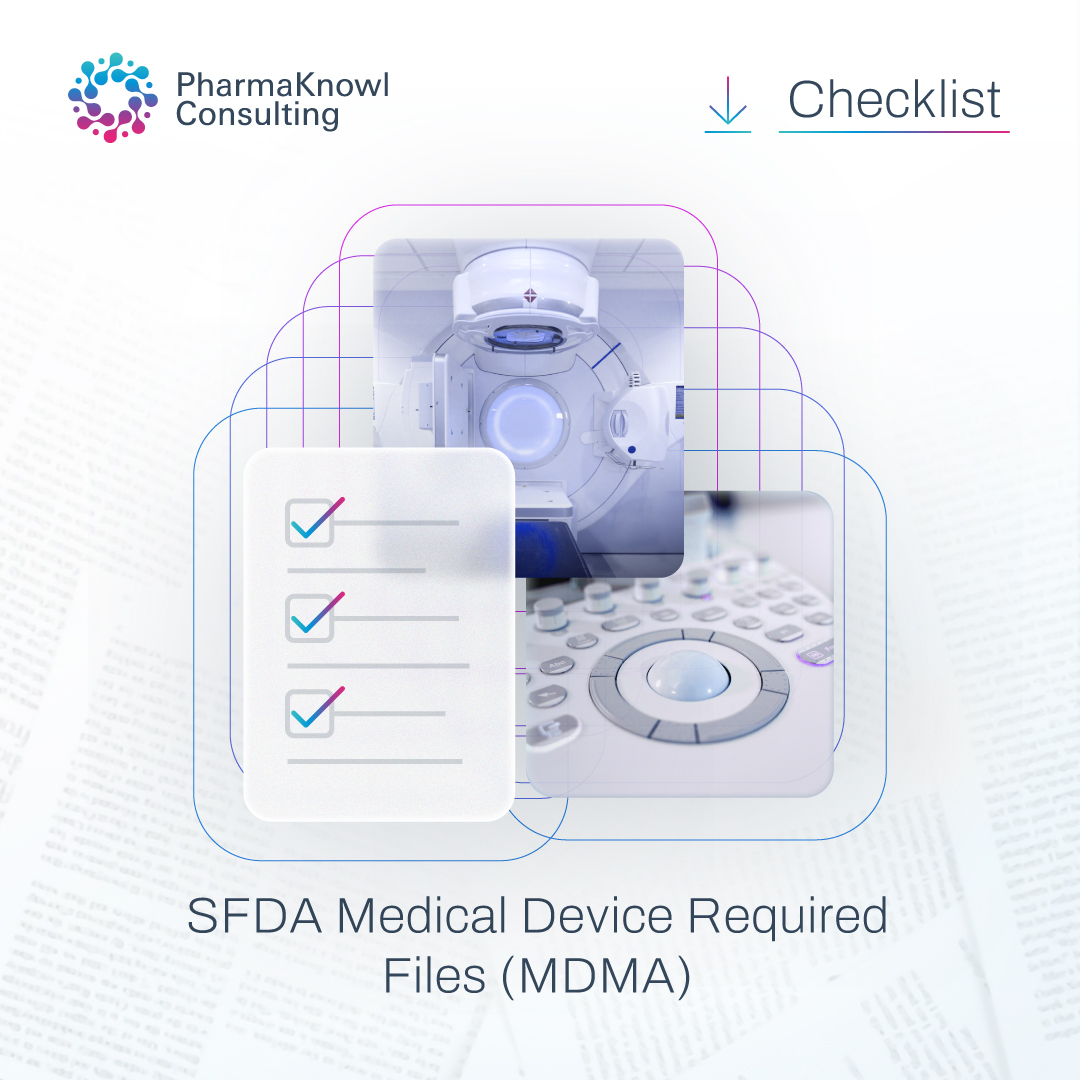
About the Author
Heba Rasheed
I am a Pharmacists, working as a Regulatory Affairs Specialist in PharmaKnowl. Experienced in Pharma and MedTech regulations.
Post-market clinical follow-up (PMCF) is one of the post-market surveillance methods that the SFDA requires during medical device registration in Saudi Arabia. PMCF provides clinical evidence demonstrating conformity to essential requirements, including an assessment of the benefit-to-risk ratio.
However, it’s essential to recognize that demonstrating conformity assessment is a pre-market element that influences the decision to place the medical device on the Saudi market. In certain situations, manufacturers fail to detect risks that become visible only after long-term use of the device. Therefore, manufacturers must implement a proper post-market surveillance plan to investigate and assess the risks associated with the product after it has been marketed.
The investigation aims to collect and accumulate real-world data that addresses patient safety and the device’s effectiveness at the post-market phase through systematic and appropriate post-market clinical follow-up studies.
Table of contents
When to implement a PMCF study?
Identifying a possible residual risk through a pre-market evaluation.
In these circumstances, the decision is evaluated during the pre-market phase, based on identifying possible residual risks and uncertainties regarding long-term clinical performance that could affect the benefit-to-risk ratio.
Identifying a safety signal at the post-market phase is associated with insufficient clinical data for the long-term use of the medical device.
The decision in these circumstances is evaluated at the post-market phase, which is undertaken based on a trigger in the medical device adverse event report and any other means of post-market activities. In these situations, the SFDA post-market clinical evaluation team will take the responsibility of evaluating the medical device in question. In cases where there is an insufficiency in the clinical data that necessitates withdrawing clinical evidence, the team may request PMCF studies to address the unanswered question(s) that could impact the device’s benefit-to-risk ratio.
Process in SFDA
In this section, we will clarify the steps taken by the SFDA to identify the issue to be complemented with PMCF studies and the SFDA’s expectations afterwards. After determining the problem, manufacturers and their authorized representatives will be responsible for surveying in a manner that addresses the unanswered question(s).
Issue identification
First, when PMCF studies are needed during the pre-market evaluation, the decision will be made during the pre-market approval process. During the medical device registration (MDMA), SFDA will request the applicant to provide a PMCF plan specially designed for the Saudi market and implement it later.
Secondly, SFDA may identify issues for PMCF studies during a device’s life cycle management. Such points may be identified through various sources, including analysis of adverse event reports, a recall or corrective action, post-approval data, review of pre-market data, reports from other governmental authorities, or review of scientific literature.
Issuance of the PMCF studies order
Whenever SFDA identifies a potential issue for a medical device that may warrant PMCF studies, an order will be issued to target the corresponding manufacturer and its AR in Saudi Arabia. Such an order should be dated, assigned a number, and clearly describe the needed clinical evidence. On the other hand, a manufacturer must submit a PMCF plan within 30 days of receiving the PMCF order and commence the study no later than 15 months after the date the SFDA issues the PMCF order.
Elements of a PMCF Study
- The objective(s) of post-market clinical follow-up studies.
- The design of PMCF studies
PMCF studies should be designed to address the objective(s). The design may vary, but it should be scientifically sound to allow valid conclusions to be drawn. Study design can take several forms. - The PMCF study plan
All PMCF studies should have an appropriate plan for addressing the stated objectives. - Implementation of the PMCF study, data analysis, and conclusion(s).
The study should:
- Be executed with adequate control measures to ensure compliance with the plan.
- Include data analysis with conclusions drawn according to the analysis plan by someone with appropriate expertise.
- A final report should include conclusions about the original objective(s) and hypothesis, and provide clear clinical evidence supporting the raised PMCF order.
PMCF Information
The data and conclusions derived from the PMCF study provide clinical evidence to support the post-market surveillance program and input into the clinical evaluation process. This may result in the need to reassess whether the device continues to comply with the Essential Principles. Such assessment may result in corrective or preventive actions, for example, changes to the labelling/instructions for use, changes to manufacturing processes, changes to the device design, or public health notifications.
PMCF Support in Saudi Arabia
We at PharmaKnowl provide experienced support for implementing SFDA PMCF in Saudi Arabia. We help with:
- Developing a PMCF plan as per SFDA guidelines.
- Conducting the PMCF in the Saudi market.
The design of the PMCF plan for Saudi Arabia is a critical step since it defines the scope and the type of protocols that might implicate the applicant in unnecessary scope, hence costs and timelines. Contact us for guidance and consultation.
Read More:
SFDA Registration








